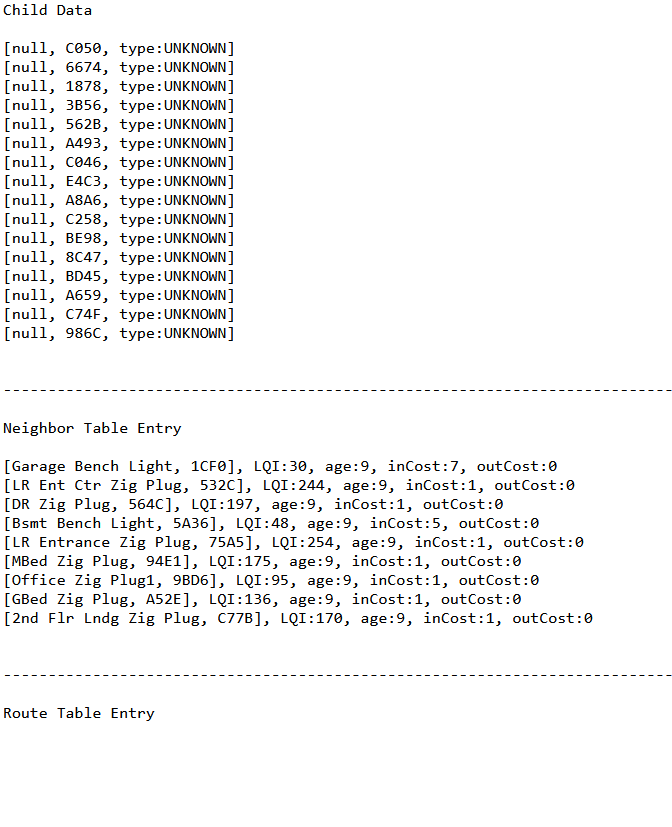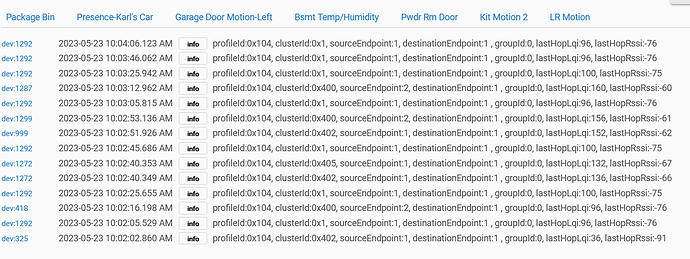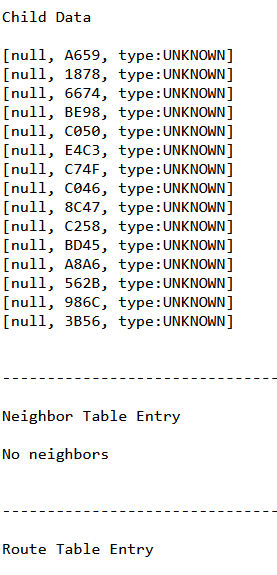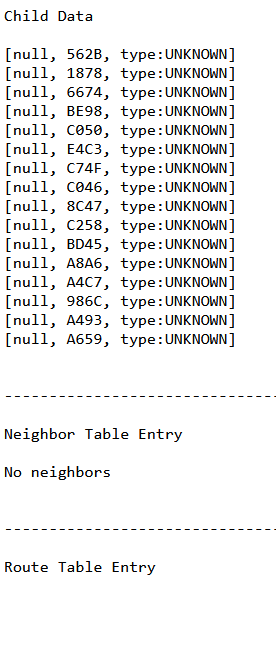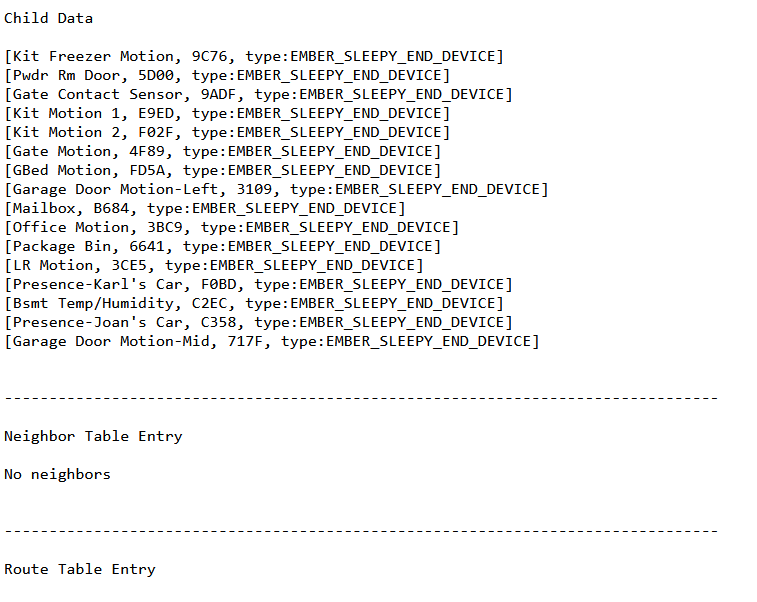Not happy with all the zigbee radio reboots with attendant ST Arrival sensors mis-operations and 3 of my Centralite 4200C repeaters going off line, I thought I'd do an experiment. The experiment has just begun.
I unplugged all 9 of my mains-powered Centralite 4200C plugs, which are the only repeaters I have. These are the only mains-powered zigbee devices I have.
Maybe 4 had a lamp plugged into them, and the rest for Christmas lights, but nothing that ZEN04 plugs couldn't replace.
I have 16 battery-powered zigbee devices:
9 Indoor Hue Motions
1 Outdoor Hue Motion
3 Xfinity Contact Sensors
1 Third Reality Temp/Humidity Sensor
2 SmartThings Arrival Sensors, V4
Z-wave includes plenty of mains powered switches, some motions, garage/gate relays, and some plugs.
I walked around the place and, so far, everything seems to work!
I thought it was cool at how quickly it recovered. Much more resilient than z-wave would have been, I believe, but alas, not so much lately.
The Child/Route table show all 16 of the battery powered zigbee devices accounted for.
The Neighbor table shows outCosts of 0 for the 9 mains-powered repeaters, which makes sense since they are all unplugged.
Zigbee radio power is set at 20.
We'll see how the zigbee radio reboot thing goes now.
32 is the max number of devices without a repeater, correct?
